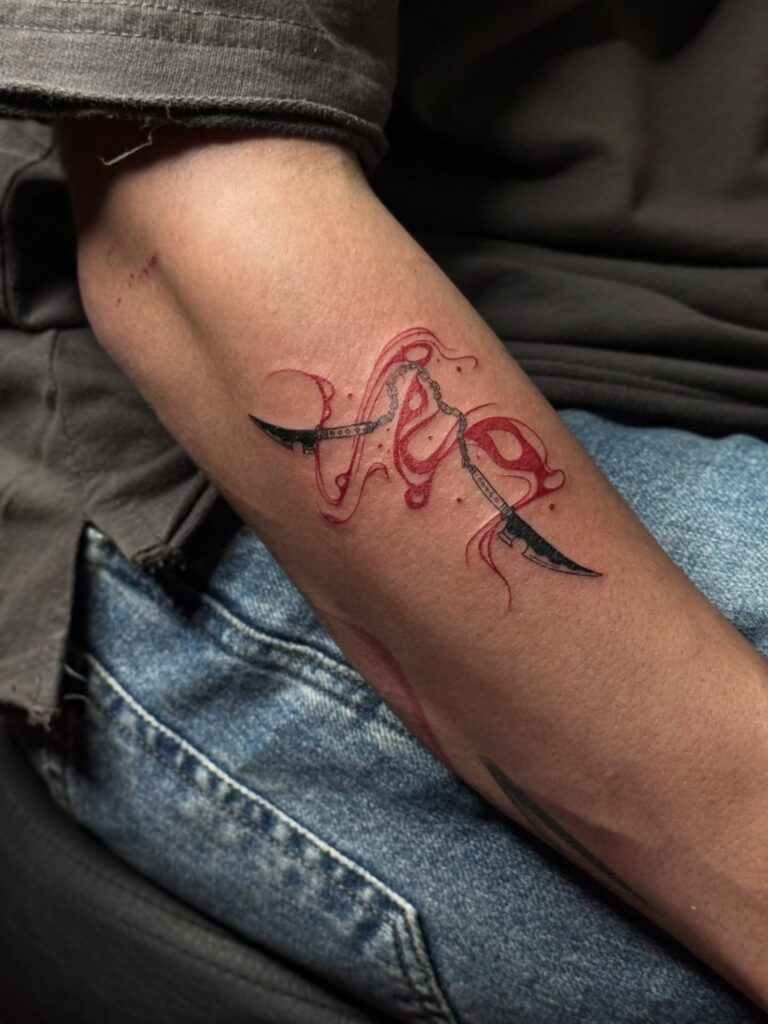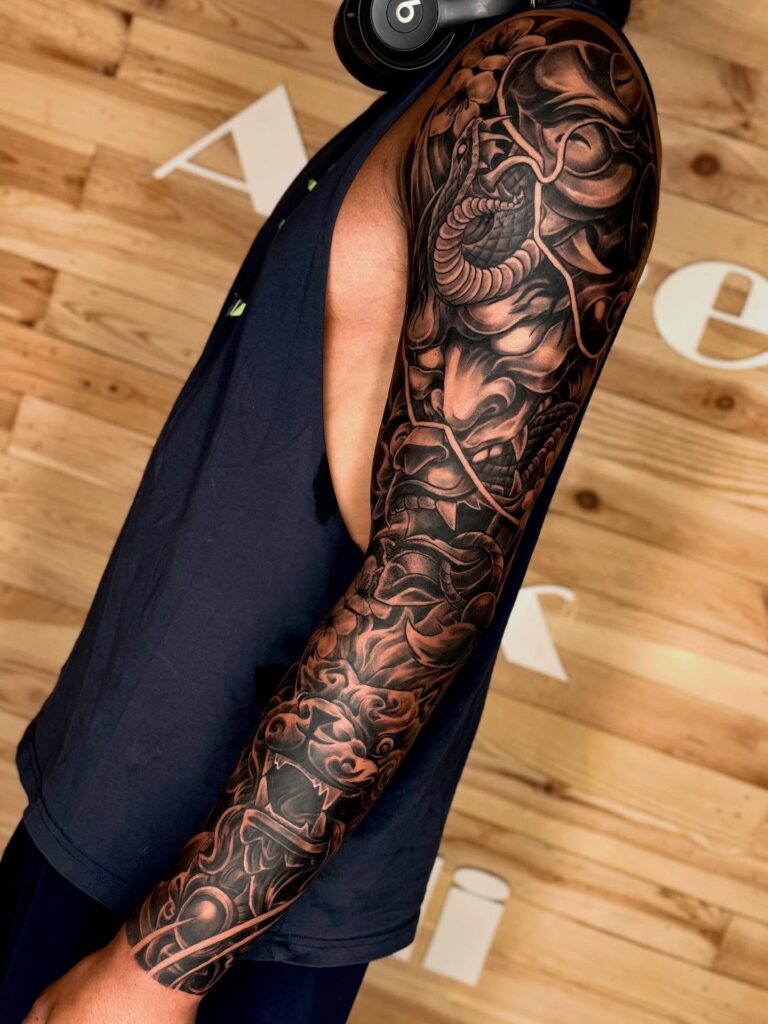Japanese tattoos, or irezumi, are more than just body art—they are living canvases that carry centuries of cultural heritage, symbolism, and storytelling. Known for their vibrant colors, bold lines, and striking imagery such as koi fish, dragons, cherry blossoms, and tigers, these tattoos often represent strength, perseverance, protection, and balance. Beyond their beauty, Japanese tattoos have a deep spiritual resonance, weaving mythology, folklore, and philosophy into each design. Choosing a Japanese tattoo isn’t just about aesthetics; it’s about embracing a tradition that transforms the skin into a narrative of identity and meaning.
How to Choose the Right Japanese Tattoo
Selecting the perfect Japanese tattoo begins with understanding its symbolism. Each motif carries layered meanings—for instance, koi fish symbolize determination and courage, while dragons embody wisdom and protection. Consider your personal journey and values, then match them with the imagery that speaks to your spirit. Placement is also significant in Japanese tattooing; full sleeves, back pieces, or body suits are common, with designs flowing seamlessly to create harmony. Consult a skilled tattoo artist familiar with Japanese techniques, as they will ensure the authenticity and cultural respect embedded in your chosen design.
1. Bold Koi Fish Forearm Tattoo
This Japanese koi fish tattoo showcases a striking balance of bold blackwork and delicate detailing. The scales are meticulously shaded, capturing the koi’s strength and resilience. Flowing water elements frame the design, symbolizing perseverance against life’s struggles.

Traditionally, koi fish in Japanese tattooing represent courage, transformation, and prosperity. Positioned on the forearm, it becomes a visible reminder of determination and triumph. The negative space adds depth, allowing the koi to stand out as the central focus. This timeless design pays homage to Irezumi traditions while maintaining a clean, modern aesthetic perfect for body art enthusiasts.
2. Minimal Katana-Inspired Tattoo
This modern Japanese tattoo takes inspiration from the legendary katana, blending sharp black ink with flowing red accents. The abstract swirls symbolize blood and energy, giving movement and intensity to the design. Unlike traditional full-bodied Japanese tattoos, this piece embraces minimalism, focusing on symbolism rather than large-scale imagery.

The katana blade represents honor, strength, and discipline, deeply tied to samurai culture. Its placement along the arm highlights the sleek, elongated design, emphasizing elegance and sharpness. This tattoo is perfect for those who appreciate subtle yet powerful nods to Japanese heritage through contemporary ink artistry.
3. Full Chest and Arm Japanese Bodysuit
A breathtaking example of Irezumi, this tattoo extends across the chest and both arms, showcasing vibrant Japanese artistry. Dominated by bold outlines and rich colors, the design features coiled serpents, waves, and peonies. The flowers bring softness, balancing the fierce imagery of mythical creatures. With every curve, the tattoo flows seamlessly, emphasizing the wearer’s physique.

Japanese bodysuits like this are steeped in tradition, often telling layered stories of strength, protection, and beauty. The bright reds and greens contrast dramatically with deep blacks, creating an unforgettable piece. This tattoo reflects mastery, cultural homage, and dedication to large-scale body art.
4. Snake Outline Leg Tattoo
This leg tattoo is a work in progress, showing the early stages of Japanese snake design. The outlined serpent winds across the calf, emphasizing fluidity and natural motion. Known as a symbol of rebirth, transformation, and protection, snakes hold deep meaning in Japanese tattooing.

Clouds frame the piece, giving it a sense of mysticism and flow. The absence of shading or color reveals the artistry of linework, showcasing the precision required before layers are added. Once completed, this tattoo will transform into a bold statement, blending power and elegance while paying tribute to traditional Irezumi symbolism.
5. Traditional Japanese Hand Tattoo
This intricate Japanese tattoo stretches from the forearm onto the hand, featuring swirling clouds and floral motifs. Using deep black ink balanced with soft shading, the piece embodies movement and balance.

The floral accents lighten the composition, symbolizing beauty and the transient nature of life, while the clouds connect the design to classic Japanese tattoo storytelling. Hand tattoos in Japanese culture are striking statements, as they remain highly visible and bold. This design reflects strength, resilience, and elegance, blending traditional elements with a modern placement. A masterful work of symmetry and cultural reverence, it captures timeless artistry.
6. Fierce Oni and Snake Sleeve
This full-sleeve tattoo brings to life the power and intimidation of Japanese mythology. The design features an oni mask paired with a coiled serpent, both central figures in traditional Irezumi.

Oni, or demons, symbolize protection through fear, warding off evil spirits, while snakes embody transformation and wisdom. The rich black-and-brown shading enhances the fierce expressions and textures, creating depth and intensity. Flowing clouds and waves unify the imagery, wrapping seamlessly around the arm. This tattoo is a testament to bravery and spiritual defense, merging myth and artistry into a captivating, culturally rooted masterpiece.
7. Japanese Buddha Backpiece
This full back tattoo is a stunning homage to Japanese spiritual themes, dominated by a serene Buddha figure surrounded by traditional elements. Radiating calm, the Buddha is depicted in meditation, symbolizing enlightenment and peace. Waves and clouds rise dramatically, signifying the challenges of life and the path to spiritual awakening.

Below, fiery deities and protective figures add intensity, balancing serenity with power. The vibrant palette of orange, red, and gray brings dynamic contrast, making the sacred imagery even more powerful. This backpiece embodies devotion, balance, and the beauty of Japanese tattoo storytelling across a large canvas.
8. Bold Red and Black Snake Leg Tattoo
This striking Japanese tattoo depicts a snake coiled elegantly along the calf, rendered in bold red and black ink. The contrasting scales bring depth and intensity, making the serpent appear alive with motion. A single flower adds balance, softening the ferocity with a touch of nature.

In Japanese tattoo culture, snakes represent protection, good fortune, and transformation, making them powerful symbols. The design’s dynamic curves emphasize the natural shape of the leg, blending art with anatomy. This piece is a perfect example of modern Japanese tattooing—bold, vibrant, and deeply symbolic in meaning and execution.
9. Dragon Shoulder and Arm Tattoo
This Japanese tattoo wraps around the shoulder and arm, showcasing the legendary dragon in vivid colors. With scales intricately detailed and flames bursting from its mouth, the dragon exudes strength, wisdom, and power.

Red, orange, and green hues create a fiery effect, while black waves provide contrast and grounding. Dragons in Irezumi symbolize protection, balance, and courage, making them popular motifs. The design flows seamlessly across the chest and arm, accentuating the wearer’s form. This tattoo is not just body art—it’s a cultural emblem, embodying resilience and mythical grandeur through traditional Japanese inkwork.
10. Traditional Japanese Hannya-Inspired Leg Tattoo
This leg tattoo features a bold mask-like face reminiscent of the Hannya mask, surrounded by dark swirling clouds and cherry blossoms. The vivid reds on the cheeks and floral accents provide striking contrast against deep black shading.

In Japanese culture, Hannya masks symbolize complex emotions, often jealousy and passion, while also serving as protective charms. Combined with cherry blossoms, this tattoo blends themes of beauty, impermanence, and emotional depth. Its placement along the leg allows for a dramatic vertical flow. This design captures the intensity and storytelling essence of Japanese tattoo traditions in a visually powerful statement.
Tattoo Aftercare
Proper aftercare is vital to preserve the vibrancy and detail of your Japanese tattoo. In the first few days, keep the tattoo covered as advised by your artist, then gently clean it with mild soap and lukewarm water. Apply a thin layer of fragrance-free moisturizer to prevent dryness, but avoid heavy lotions or oils that may clog pores. Stay out of direct sunlight, pools, and saunas until fully healed—excess moisture and UV rays can cause fading or infection. Even after healing, use sunscreen regularly to protect the rich colors and fine lines, ensuring your tattoo remains as powerful as the story it tells.
Conclusion
Japanese tattoos are more than decorative ink—they are cultural treasures that embody resilience, spirituality, and artistry. Choosing the right design means honoring tradition while expressing your personal story, and proper aftercare ensures that your tattoo remains vibrant for years to come. Whether it’s a koi swimming upstream, a cherry blossom drifting in the wind, or a fierce dragon across your back, a Japanese tattoo is a lifelong masterpiece etched in both skin and spirit.
FAQ
1. Are Japanese tattoos painful?
Yes, especially since many are large and detailed. However, pain tolerance varies from person to person.
2. Can anyone get a Japanese tattoo?
Yes, but it’s important to approach the tradition with respect and consult artists skilled in irezumi.
3. How long do Japanese tattoos take to complete?
Depending on size and complexity, sessions can span from several hours to months for large-scale pieces.
4. Do Japanese tattoos have to follow strict rules?
Traditional irezumi often follow specific motifs and body placements, but modern adaptations can be more flexible.
5. How much do Japanese tattoos cost?
Costs depend on the artist, size, and detail. Large traditional works can be quite expensive but are considered lifelong investments.